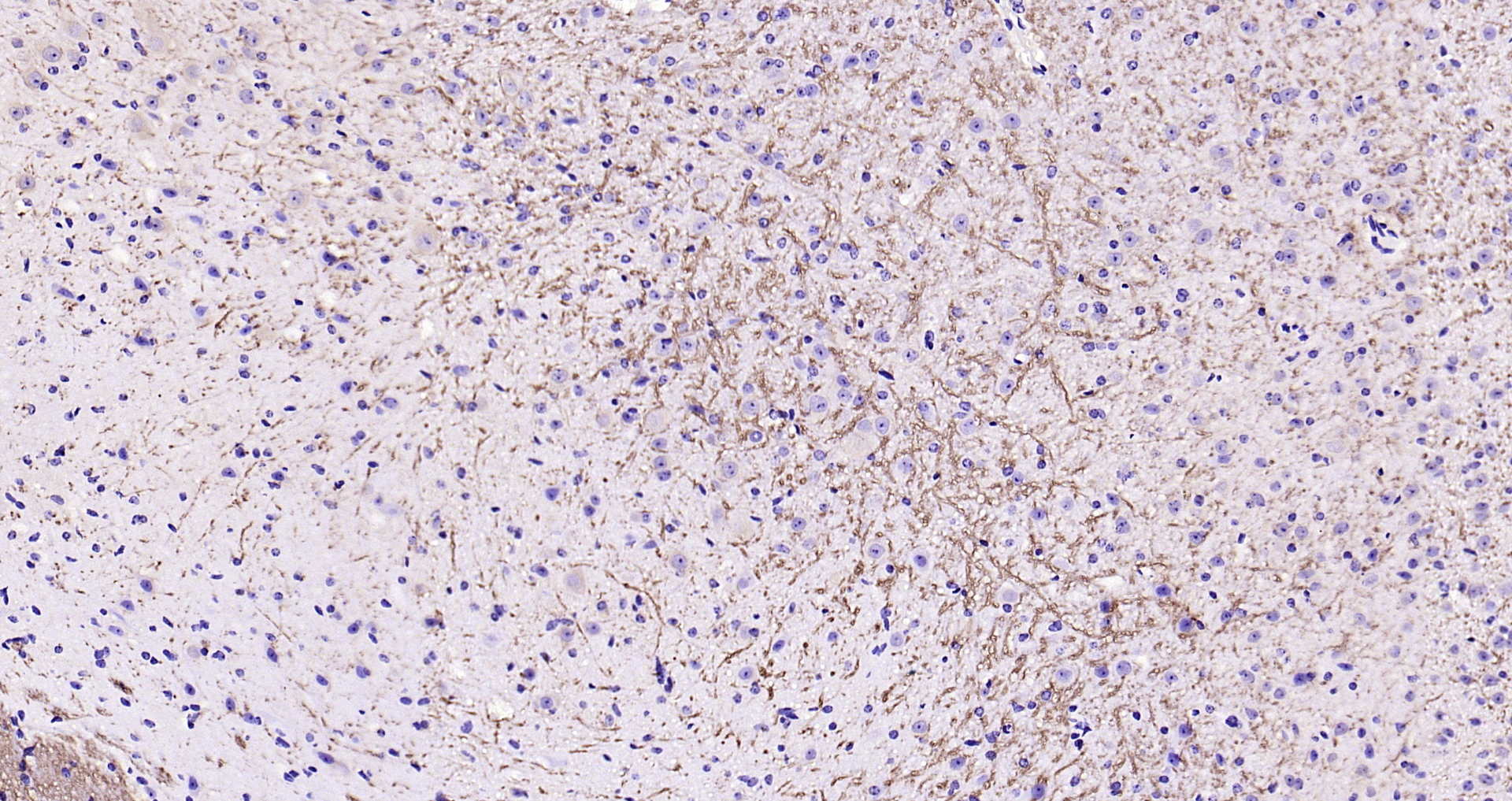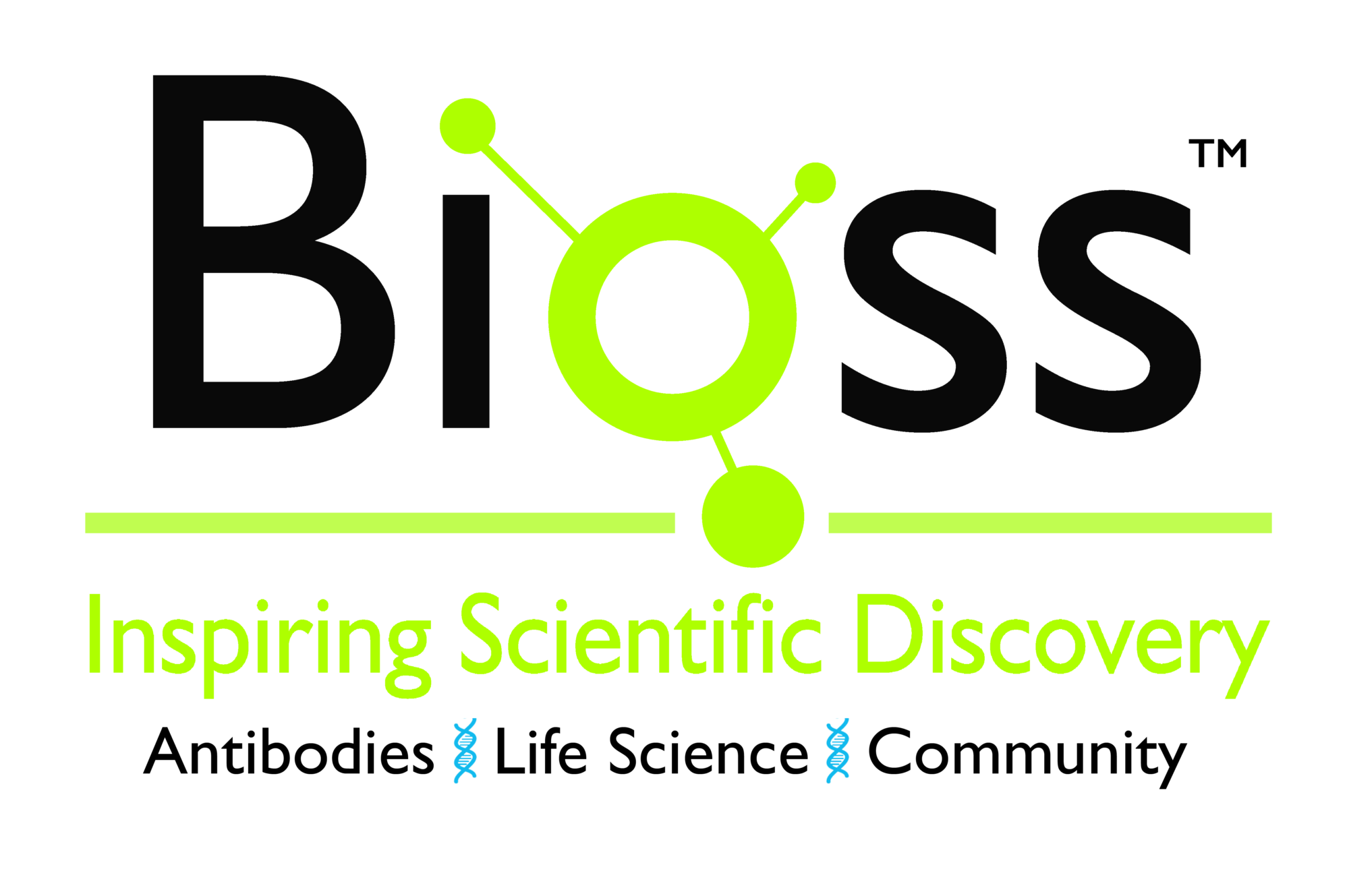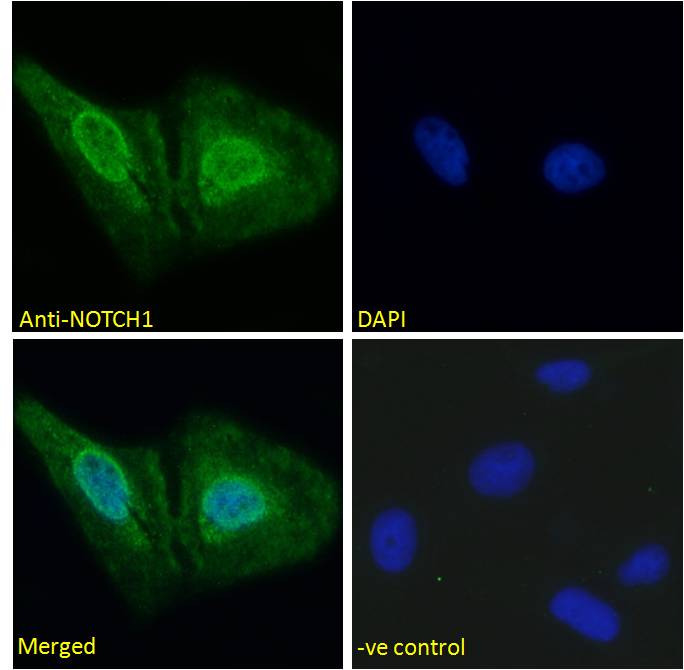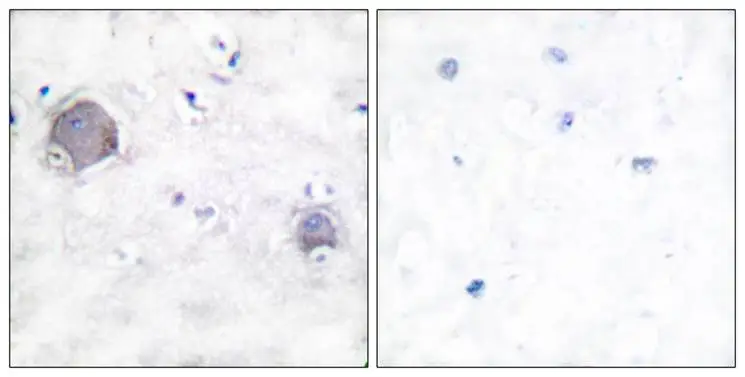NOTCH1 antibody [A6]
GTX23294
ApplicationsFlow Cytometry, ImmunoHistoChemistry, ImmunoHistoChemistry Paraffin
Product group Antibodies
ReactivityHuman, Mouse
TargetNOTCH1
Overview
- SupplierGeneTex
- Product NameNOTCH1 antibody [A6]
- Delivery Days Customer9
- Application Supplier NoteFor FACS: Use at an assay dependent dilution. For IHC-P: Use at 1/50 for 30 minute at room temperature. Staining of formalin fixed tissues requires boiling tissue sections in 10mM citrate buffer, pH 6.0, for 10 - 20 min followed by cooling at room temperature for 20 min. Optimal dilutions / concentrations should be determined by the end user.
- ApplicationsFlow Cytometry, ImmunoHistoChemistry, ImmunoHistoChemistry Paraffin
- CertificationResearch Use Only
- ClonalityMonoclonal
- Clone IDA6
- Concentration0.2 mg/ml
- ConjugateUnconjugated
- Gene ID4851
- Target nameNOTCH1
- Target descriptionnotch receptor 1
- Target synonymsAOS5, AOVD1, TAN1, hN1, neurogenic locus notch homolog protein 1, Notch homolog 1, translocation-associated, notch 1, translocation-associated notch protein TAN-1
- HostMouse
- IsotypeIgG2b
- Protein IDP46531
- Protein NameNeurogenic locus notch homolog protein 1
- Scientific DescriptionThis gene encodes a member of the NOTCH family of proteins. Members of this Type I transmembrane protein family share structural characteristics including an extracellular domain consisting of multiple epidermal growth factor-like (EGF) repeats, and an intracellular domain consisting of multiple different domain types. Notch signaling is an evolutionarily conserved intercellular signaling pathway that regulates interactions between physically adjacent cells through binding of Notch family receptors to their cognate ligands. The encoded preproprotein is proteolytically processed in the trans-Golgi network to generate two polypeptide chains that heterodimerize to form the mature cell-surface receptor. This receptor plays a role in the development of numerous cell and tissue types. Mutations in this gene are associated with aortic valve disease, Adams-Oliver syndrome, T-cell acute lymphoblastic leukemia, chronic lymphocytic leukemia, and head and neck squamous cell carcinoma. [provided by RefSeq, Jan 2016]
- ReactivityHuman, Mouse
- Storage Instruction2°C to 8°C
- UNSPSC12352203






![IHC-P analysis of breast adenocarcinoma tissue using GTX84019 NOTCH1 antibody [3E12]. Antigen retrieval : Heat-induced epitope retrieval by 10mM citrate buffer, pH6.0, 100oC for 10min.](https://www.genetex.com/upload/website/prouct_img/normal/GTX84019/GTX84019_2164_IHC-P_w_23061420_289.webp)
![IHC-P analysis of colon adenocarcinoma tissue using GTX84020 NOTCH1 antibody [4C9]. Antigen retrieval : Heat-induced epitope retrieval by 10mM citrate buffer, pH6.0, 100oC for 10min. Dilution : 1:50](https://www.genetex.com/upload/website/prouct_img/normal/GTX84020/GTX84020_2178_IHC-P_w_23061420_888.webp)
